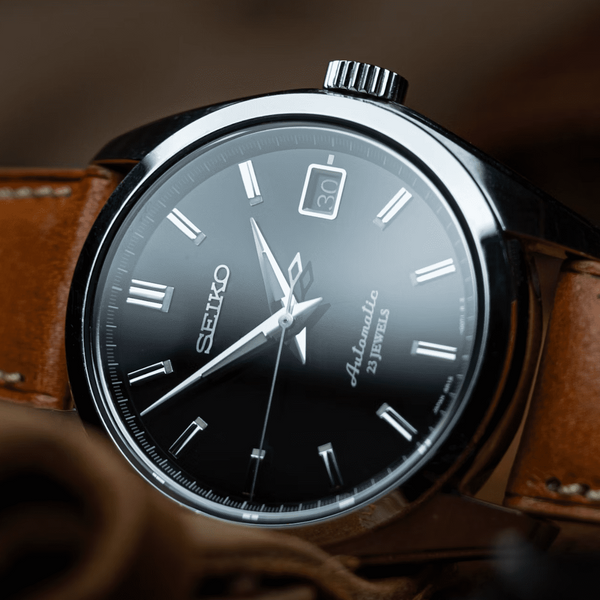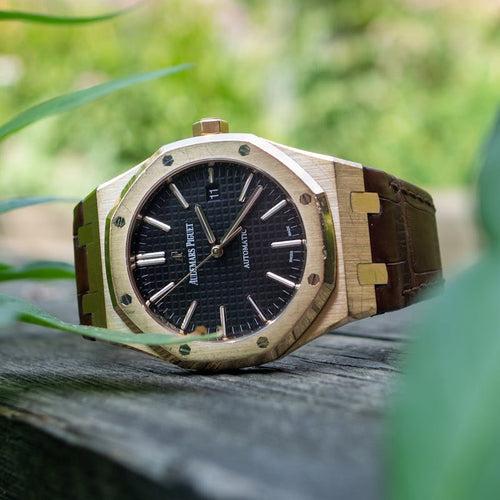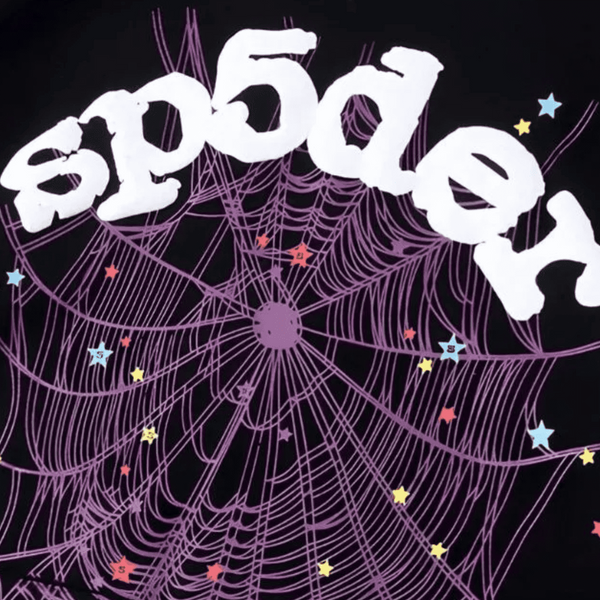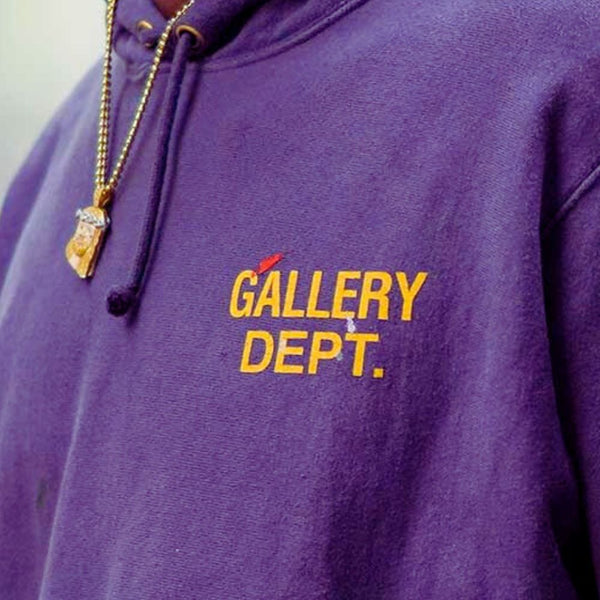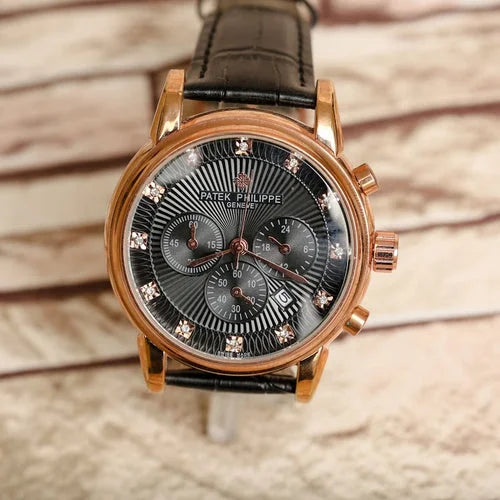How To Spot Real Vs Fake Vans

In today’s world of fashion, owning a pair of iconic Vans shoes is a trend that never fades. However, with their popularity comes the inevitable rise of counterfeit versions.
Distinguishing between real vs fake Vans can be challenging, but it's crucial for ensuring that you're investing in a quality product.
This guide aims to equip you with the knowledge to identify genuine Vans from the fakes. From the packaging to the minute details of the shoes themselves, we'll walk you through the key features to look for. Keep reading to ensure your next pair of Vans is the real deal.
Table of Contents
[ open ]Key Features to Check on Vans Shoes
Spotting fake Vans involves a close examination of various elements, each of which can reveal the authenticity of the shoes. Here’s a detailed breakdown of what to look for.
Shoe Box

Before you even inspect the shoes themselves, you might be able to spot a fake by examining the box. Authentic Vans shoes come in a sturdy box with a locking mechanism that ensures it stays closed securely. The box should have clear and precise labeling, including details like the shoe style, color, size, and a barcode.
An easy way to verify authenticity is by scanning the barcode on the box. You can use smartphone apps like ShopSavvy or ScanLife to do this. If the app recognizes the barcode and matches it with the correct shoe details, the shoes are likely authentic. If not, you may be dealing with a counterfeit product. Inside the box, the shoes should be wrapped in high-quality Vans-branded paper to protect them.
When you order authentic Vans online (preferably from vans.com) or purchase them in-store, they should come in top-quality packaging. This includes a thick, well-branded cardboard shoebox without any spelling mistakes. The box should have a sticker with the barcode, production country code, size, model, and color.
Inside, you’ll find Vans-branded tissue paper, and a shiny 'Off the Wall' label attached to the sneaker through the top eyelet. This label should exactly match the Vans trademark rubber tab on the back of the shoe, free from any spelling mistakes or defects.
Weight of the Shoes
One of the easiest ways to differentiate real vs fake Vans is by their weight. Genuine Vans shoes are made from high-quality materials, giving them a solid, heavier feel. Fake Vans, on the other hand, are often lighter because they use cheaper materials. When you hold the shoes, the authentic pair will feel substantial and well-built, while the fake ones will feel lighter and flimsier.
Weighing the shoes is an effective method to distinguish between original and fake Vans. Authentic Vans are known for their heft, which contributes to their durability and comfort. For example, Vans Era shoes typically weigh around 0.75 pounds, while Vans Sk8-Hi Classics can weigh up to 2.87 pounds. If you've owned a pair of Vans before, you'll know they aren't light; they generally weigh between 0.75 to 2.87 pounds, depending on the style.
In contrast, counterfeit Vans are usually lighter and more flexible. This reduction in weight often leads to less cushioning and support, causing discomfort and making the soles of your feet tingle easily. Fake Vans weigh significantly less because they are made with low-quality materials. For instance, in a comparison of real and fake Vans of the same size (UK women's size 6, US women's size 8), the fake pair weighed 10 ounces, whereas the genuine pair weighed over 15 ounces. The fakes felt flimsy and lacked the density and sturdiness of the real thing.
If your Vans feel unusually light, like a pair of running shoes, they are likely fake. Checking the weight of your Vans is a clear and straightforward way to identify a counterfeit pair.
Stripe on the Sole

A distinctive feature of Vans shoes is the signature stripe that runs above the sole and encircles the entire shoe. On authentic Vans, this stripe is molded into the shoe, resulting in clean and consistent lines.
The molded stripe is high-quality, straight, with clean edges, and cannot be rubbed off. In contrast, fake Vans often have painted stripes, which can appear uneven or poorly aligned.
These painted stripes on counterfeit shoes lack the same clean lines as genuine Vans and may even have excess paint in unwanted areas. By closely inspecting the stripe, you can get a good indication of the shoe's authenticity.
Outer Sole Texture

The texture of the outer sole is another key indicator of authenticity. Real Vans have a sole composed of separate pieces that are meticulously glued together, resulting in a durable, high-quality construction with a distinct feel. In contrast, counterfeit Vans often feature soles that are molded in one piece or poorly glued, lacking the same level of durability and craftsmanship.
Examine the outsole of your Vans. Genuine Vans feature an intricate pattern made up of diamonds and rhomboids. Toward the top center of a diamond in this pattern, you should find a three-letter code, typically 'CLK.' This code should match the country code on a sticker inside the Vans shoe box. If your sneakers lack the diamond and rhomboid pattern or are missing the three-letter code, they are likely fake.
Additionally, check the outer sole around the toe area. Genuine Vans have a separate piece of the sole that is carefully glued on. In contrast, fake pairs often have this part molded as a single piece, indicating lower quality and authenticity issues.
Stitching Quality
High-quality stitching is a hallmark of genuine Vans. Each stitch should be uniform, without any loose threads or uneven lines. Authentic Vans feature stitching that is neat, precise, and consistent, showcasing the brand’s dedication to craftsmanship and durability.
Conversely, fake Vans often display subpar stitching. Common issues include stitching that protrudes at the back of the shoe rather than lying flat, misaligned stitching along the fabric edges, or irregular stitches along the seams. These flaws reveal poor workmanship and are clear indicators of counterfeit products.
Careful inspection of the stitching is crucial in identifying fake Vans. Genuine pairs exhibit even and well-executed stitching with a consistent woven pattern throughout. Any instances of double stitches, defects, or loose threads are definite signs of a counterfeit item.
In the comparison image of my real and fake Vans, the fake pair demonstrates loose threads and uneven stitching, underscoring its inferior craftsmanship. Additionally, genuine Vans have a smoothly cut upper without any bumps, whereas counterfeit versions may feature uneven stitching on the upper, suggesting lower production standards.
Bottom of the Shoe
The bottom of genuine Vans features a distinctive waffle pattern, serving both as a stylish design element and providing exceptional grip and durability. Authentic Vans showcase crisp and well-defined lines within this pattern, often including a small manufacturing batch code discreetly placed within one of the diamonds.
In contrast, counterfeit Vans typically exhibit a less precise waffle pattern. The lines on fake shoes may appear blurred or uneven, and the overall quality of the rubber sole and adhesive is often inferior. This disparity in craftsmanship stems from the use of lower-grade materials and less resilient glue compared to genuine Vans, originally engineered for demanding sports like BMX and skateboarding.
Footbed Attachment
In genuine Vans shoes, the footbed is securely glued and does not easily detach. The attachment is firm, ensuring comfort and longevity. If you can peel back the footbed of your Vans, it’s a sign that they might be fake. The quality of the glue and the precision of the attachment are key indicators of authenticity.
Shoelaces
The shoelaces on real Vans are flat and of high quality. They feel sturdy and are designed to last, unlike the laces on fake Vans, which are often round and made from inferior materials. The difference in the laces might seem minor, but it’s a small detail that can help you distinguish between real vs fake Vans.
Tips for Spotting Fake Vans Online
When shopping for Vans online, the risk of encountering counterfeit products increases. Here are some tips to help you spot fake Vans before making a purchase.
Look for detailed descriptions and photos. Authentic sellers will provide high-resolution images from multiple angles, showing the shoe’s key features. If the images are blurry or there’s a lack of detailed descriptions, it could be a red flag.
Avoid pushy sellers and odd payment methods. Reputable sellers won’t pressure you into making a quick decision or ask for unusual payment methods. Be wary of sellers who insist on wire transfers or other untraceable payment options.
Purchase from authorized dealers. Buying from the official Vans website or authorized retailers significantly reduces the risk of buying counterfeit products. Authorized dealers will have a track record of selling genuine products, giving you peace of mind.
Best Practices to Avoid Buying Fake Vans
To ensure you’re purchasing authentic Vans, follow these best practices.
Buy from the official Vans website or authorized retailers. This is the most reliable way to ensure you’re getting genuine shoes. Authorized retailers include well-known department stores and reputable online platforms that have official partnerships with Vans.
Check return policies and scrutinize the product. A good return policy is a sign of a reputable seller. If the seller doesn’t offer returns or has a very restrictive policy, it could be a sign that they are selling counterfeit products. Additionally, when you receive your Vans, scrutinize them closely using the key features outlined in this guide.
Use credit cards for protection. Banks often provide buyer protection, which can be helpful if you end up purchasing counterfeit products. They can assist in disputing charges and getting your money back if you’ve been scammed.
Lastly, you can always use a company like Legit Grails to legit check your purchases and return them if they're fake. Legit Grails has successfully authenticated more than 500k items, from simple Vans shoes to expensive watches and jewelry.
Online Authentication Services
In addition to personal inspection, you can use shoe authentication services. These services specialize in verifying the authenticity of products, including Vans shoes. By providing detailed photos and descriptions, you can get an expert opinion on whether your shoes are genuine. This can be particularly useful for high-value purchases or if you’re buying from a less-known seller.
Bottom Line
Ensuring that you buy real vs fake Vans requires attention to detail and a bit of knowledge.
When shopping online, be cautious of vague descriptions, pushy sellers, and non-standard payment methods.
Always purchase from authorized dealers and use secure payment methods. By following these guidelines, you can enjoy your Vans shoes with the assurance that they are the real deal.
